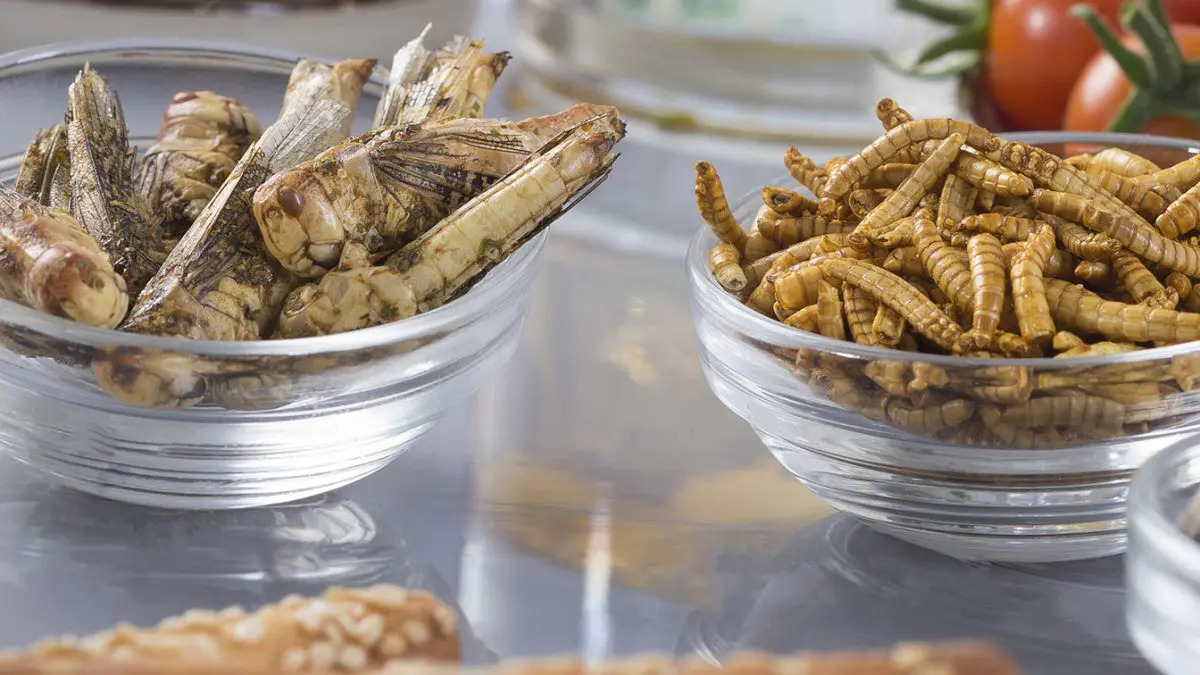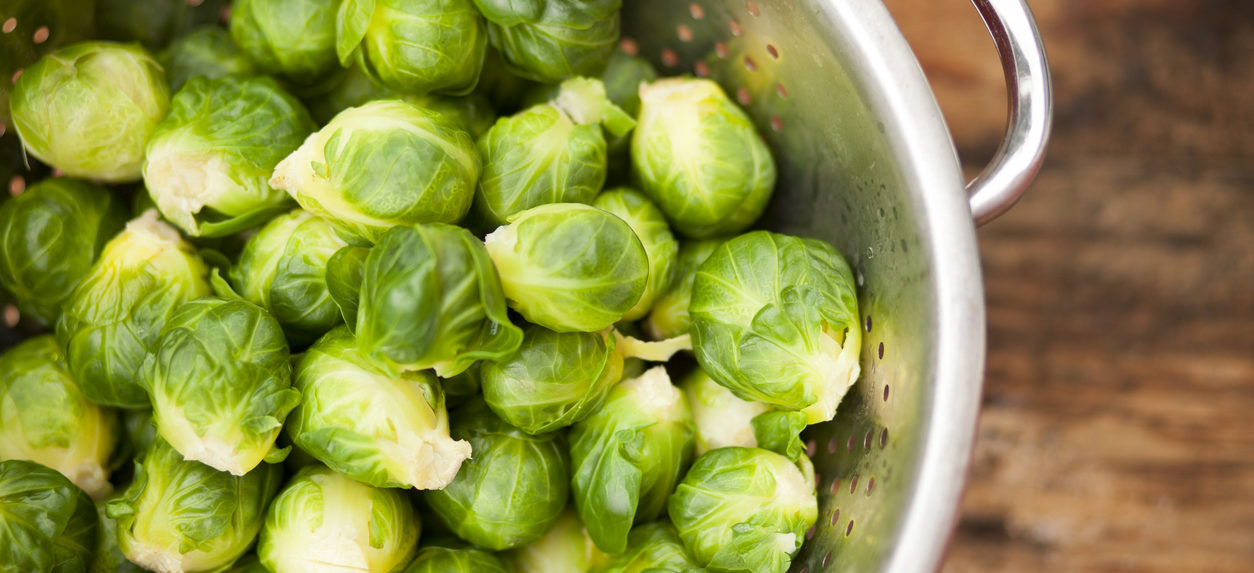Home>Gardening News and Trends>Latest News>How Much Protein In Insects


Latest News
How Much Protein In Insects
Modified: January 22, 2024
Looking for the latest news on how much protein is in insects? Discover the nutritional benefits of incorporating insects into your diet.
(Many of the links in this article redirect to a specific reviewed product. Your purchase of these products through affiliate links helps to generate commission for Chicagolandgardening.com, at no extra cost. Learn more)
Table of Contents
- Introduction
- Why insects are a good source of protein
- Protein content in common insect species
- Protein comparison between insects and traditional sources
- Digestibility of insect protein
- Potential health benefits of consuming insect protein
- Nutritional value of insect protein
- How to incorporate insects into your diet
- Conclusion
Introduction
As the world grapples with pressing issues such as food security, climate change, and sustainability, there is an increasing interest in exploring alternative sources of protein. While traditional protein sources like meat and dairy have long been staples in human diets, experts are now turning their attention to a surprising new contender – insects. Yes, you read it right – insects!
Although the idea of consuming insects may seem unconventional or even unappetizing to some, insects have been consumed by various cultures around the world for centuries. In fact, over 2 billion people currently include insects in their regular diet. As awareness about the potential benefits of insect consumption spreads, more and more people are starting to embrace these tiny creatures as a viable and environmentally friendly protein source.
So, why are insects gaining popularity as a sustainable source of protein? Unlike traditional livestock, insects require minimal resources, produce fewer greenhouse gas emissions, and can be reared in compact spaces. With the rising global population and strain on natural resources, insects offer a promising solution to food scarcity and environmental challenges.
In addition to their low ecological footprint, insects are also a nutritional powerhouse. They provide not only high-quality protein but also a range of vitamins, minerals, and healthy fats. These nutritional benefits, along with their availability and affordability, make insects an excellent option for combating malnutrition and promoting food security in both developed and developing countries.
In this article, we will delve into the fascinating world of insect protein. We will explore the protein content of common insect species, compare their protein content to traditional sources, discuss the digestibility of insect protein, and highlight the potential health benefits of incorporating insects into our diets. So, let’s open our minds and take a closer look at just how much protein insects have to offer!
Why insects are a good source of protein
When it comes to protein sources, insects have a lot to offer. Here are several reasons why insects are considered a good source of protein:
- High protein content: Insects are rich in protein, often containing higher levels than traditional sources like beef, chicken, or fish. For example, crickets can contain up to 69% protein by dry weight, while mealworms can have protein levels as high as 53%. This makes them an excellent option for meeting our protein needs.
- Complete amino acid profile: Amino acids are the building blocks of proteins, and insects possess a solid amino acid profile. They provide all the essential amino acids required by our bodies. In fact, some insects even contain more essential amino acids than traditional animal protein sources.
- Quality protein: Protein quality is determined by factors such as digestibility and amino acid composition. Insects have been found to have high-quality protein, comparable to or even superior to that of traditional meats. Their protein is easily digestible, allowing our bodies to efficiently utilize the nutrients.
- Sustainable and eco-friendly: As mentioned earlier, insects are a sustainable protein source. They require significantly less land, water, and feed compared to traditional livestock. Additionally, insects produce minimal greenhouse gas emissions, making them an environmentally friendly choice for protein production.
- Low risk of disease transmission: Unlike some traditional meat sources, insects have a low risk of transmitting diseases to humans. This is due to their unique biological and physiological characteristics, making them a safe and hygienic source of protein.
Based on these factors, it’s clear that insects have the potential to play a crucial role in addressing the global protein demand while minimizing the impact on the environment. Incorporating insects into our diets can help diversify our protein sources, reduce reliance on resource-intensive livestock production, and contribute to a more sustainable future.
Protein content in common insect species
When it comes to choosing insects as a protein source, it’s essential to know how much protein different species offer. While the protein content may vary among insect species, here are some common examples:
- Crickets: Crickets are often considered the poster child of edible insects. They are not only easy to rear but also packed with protein. On average, crickets provide around 60-70% protein by dry weight. This means that for every 100 grams of dried crickets, you can expect 60-70 grams of pure protein.
- Mealworms: Mealworms, the larvae of darkling beetles, are another popular choice for insect protein. They boast an impressive protein content of around 50-60%, making them a valuable addition to any diet.
- Black soldier fly larvae: Black soldier fly larvae have gained attention for their potential in sustainable protein production. They offer a protein content of approximately 40-50%. Not only are they protein-rich, but they are also relatively easy to farm, making them a viable option for large-scale production.
- Grasshoppers: Grasshoppers are widely consumed in many cultures and provide a significant amount of protein. They contain around 20-30% protein by dry weight, making them a nutritious choice for protein supplementation.
- Silkworm pupae: Silkworm pupae are commonly consumed in East Asia and offer a protein content of about 50-60%. They are not only protein-rich but also provide essential amino acids and other nutrients.
These are just a few examples of the protein content in common insect species. It’s important to note that the protein content may vary depending on factors such as the insect’s diet, development stage, and processing methods. However, overall, insects offer a remarkable protein content that rivals or even surpasses that of traditional meat sources.
By diversifying our protein sources to include insects, we can not only meet our nutritional needs but also promote sustainable food systems and reduce the strain on the environment.
Protein comparison between insects and traditional sources
When assessing the protein content of insects, it’s important to compare them with traditional sources to understand their true nutritional value. Here’s how insects stack up against some common protein sources:
- Beef: Beef is often touted as a high-protein food, but insects can give it a run for its money. While beef typically contains around 25-30% protein, insects like crickets and mealworms can contain over 60% protein by dry weight.
- Chicken: Chicken is another popular protein source, but certain insects surpass it in terms of protein content. While chicken typically provides around 20-25% protein, insects like black soldier fly larvae and grasshoppers can offer protein levels ranging from 20-50%.
- Fish: Fish is known for its protein richness, but again, insects hold their ground. The protein content of fish can range from 18-25%, whereas insects like crickets and mealworms can provide double that amount.
- Eggs: Eggs are a common protein source, particularly for vegetarians and flexitarians. While eggs contain around 12-15% protein, certain insects like silkworm pupae can offer nearly four times that amount.
- Peanuts: Peanuts are a plant-based protein source, but insects still outshine them in terms of protein content. Peanuts typically provide around 25-30% protein, while insects like crickets and mealworms can provide double or even triple that amount.
These comparisons clearly demonstrate that insects can rival or surpass the protein content of traditional sources like meat, poultry, fish, and plant-based proteins. In addition to their high protein content, insects also offer other nutrients, making them a well-rounded protein source.
By considering insect protein as an alternative, we can broaden our options for meeting our protein requirements while also contributing to sustainable and environmentally friendly food systems.
Digestibility of insect protein
One important aspect to consider when evaluating the nutritional value of protein sources is their digestibility. Digestibility refers to the extent to which our bodies can break down and absorb the protein from a particular food source. In this regard, insects have shown promising results.
Studies have indicated that insect protein is highly digestible. The protein found in insects is easily broken down by our digestive enzymes, allowing for efficient absorption and utilization by our bodies. In fact, several research studies have compared the digestibility of insect protein to traditional protein sources, and the results have been favorable for insects.
For example, a study published in the journal Food Chemistry found that the protein from crickets had a digestibility rate of over 90%. Similarly, another study comparing the digestibility of mealworm protein to beef protein found that mealworm protein had a digestibility rate of around 94%, while beef protein had a rate of 76%. These findings suggest that our bodies can effectively break down and absorb the protein from insects.
The high digestibility of insect protein can be attributed to several factors. Insects have a relatively low collagen content, which makes their protein easier to digest compared to tougher cuts of meat. Additionally, insects have a simpler muscle structure, further aiding in the breakdown of their protein during digestion.
Furthermore, the amino acid profile of insect protein also contributes to its digestibility. Insects provide a complete set of essential amino acids, which are crucial for our body’s growth, repair, and maintenance. The presence of essential amino acids in optimal proportions enhances the digestibility and utilization of insect protein by our bodies.
Overall, the digestibility of insect protein has shown great potential. The high digestibility, coupled with the abundance of essential amino acids, makes insect protein a valuable and efficient source of nutrition for our bodies.
Potential health benefits of consuming insect protein
Consuming insect protein not only provides a sustainable and eco-friendly source of nutrition but also offers potential health benefits. Let’s explore some of the key advantages of incorporating insect protein into our diets:
- Excellent source of high-quality protein: Insect protein is considered a complete protein as it contains all the essential amino acids required by our bodies. This makes it an excellent option for individuals looking to meet their protein needs, especially for those following plant-based or vegetarian diets.
- Aids in muscle growth and repair: Protein is essential for muscle growth, repair, and maintenance. Insect protein, with its high bioavailability and amino acid profile, can support muscle development and recovery after exercise or physical activity.
- Supports weight management: Protein has been shown to increase satiety, helping to control appetite and reduce excessive calorie intake. Insect protein, with its high protein content and digestibility, can contribute to a feeling of fullness and support weight management goals.
- Potential allergy benefits: Insects are not a common allergen and may offer an alternative protein source for individuals with allergies to more conventional proteins like milk, soy, or wheat.
- Rich in essential nutrients: In addition to protein, insects contain a range of essential nutrients such as vitamins (B vitamins, iron, zinc), healthy fats, and fiber. These nutrients play vital roles in overall health, energy production, immune function, and cognitive function.
- Environmentally sustainable: Choosing insect protein over traditional animal proteins helps reduce the ecological footprint, conserves resources, and mitigates the environmental impact of food production. Supporting sustainable food practices benefits not only our health but the health of the planet as a whole.
While more research is needed to fully understand the potential health benefits of consuming insect protein, the existing evidence suggests that it can be a nutritious addition to our diets. As a versatile and sustainable protein source, insects offer unique advantages that contribute to overall health and well-being.
Nutritional value of insect protein
In addition to their high protein content, insects offer a range of essential nutrients that contribute to their nutritional value. Let’s explore some key nutrients that make insect protein a nutritious choice:
- Vitamins and minerals: Insects are rich in various vitamins and minerals. For example, crickets contain high levels of vitamin B12, iron, and zinc, which are important for energy metabolism, red blood cell production, and immune function. Mealworms also provide significant amounts of vitamins B1 and B2, which play a role in carbohydrate metabolism and energy production.
- Healthy fats: Insect protein may also contain beneficial fats, including omega-3 and omega-6 fatty acids. These fats are essential for maintaining brain health, heart health, and promoting overall well-being.
- Fiber: Insects, particularly those consumed in their whole form, often contain dietary fiber. Fiber is important for digestive health, aiding in digestion, regulating blood sugar levels, and promoting a feeling of fullness.
- Antioxidants: Some insects, such as crickets, are known to contain antioxidants. Antioxidants help protect our cells from damage caused by free radicals and oxidative stress, contributing to overall health and disease prevention.
- Chitin: Chitin is a unique compound found in the exoskeletons of insects. While not a nutrient in the traditional sense, chitin has shown potential health benefits, including improving gut health, supporting the immune system, and promoting healthy cholesterol levels.
The nutritional composition of insects can vary depending on factors such as species, diet, and rearing conditions. However, overall, insects pack a powerful nutritional punch, offering a diverse array of nutrients that contribute to a well-rounded and balanced diet.
It’s important to note that while insect protein offers valuable nutrients, it shouldn’t be considered a sole source of nutrition. It should be incorporated as part of a varied and balanced diet that includes other protein sources, fruits, vegetables, whole grains, and other essential food groups.
By diversifying our protein sources to include insects, we can benefit from the unique nutritional value they provide while promoting sustainable and environmentally friendly food choices.
How to incorporate insects into your diet
If you’re ready to explore the world of insect protein and incorporate it into your diet, here are some tips on how to do so:
- Start with familiar options: If you’re new to eating insects, ease into it by starting with familiar options. Many companies offer insect-based products such as protein bars, chips, and powders that incorporate insect protein. These products often use finely ground or powdered insects, making them more easily acceptable for those who may be hesitant about trying whole insects.
- Try whole insects: For a more adventurous experience, consider trying whole insects. Crickets, mealworms, and grasshoppers can be found in this form and can be prepared in various ways. They can be roasted, sautéed, or even used as toppings in salads or stir-fries. Whole insects provide a crunchy texture and a unique flavor that can be quite enjoyable.
- Blend into smoothies or baked goods: Another way to incorporate insect protein is by blending it into smoothies or adding it to baked goods. Insect powders can be added to smoothies for an extra protein boost or mixed into recipes for pancakes, muffins, or protein bars.
- Combine with other protein sources: Insect protein can be combined with other protein sources to create a well-rounded meal. For example, you can incorporate crickets or mealworms into a salad, alongside grilled chicken or tofu. Combining insect protein with other sources ensures you’re getting a variety of nutrients and flavors.
- Experiment with recipes: Get creative in the kitchen by experimenting with recipes that include insect protein. There are numerous online resources and cookbooks available that provide ideas and inspiration for insect-based meals. From insect tacos to insect pasta dishes, the options are endless.
- Be mindful of allergies and intolerances: As with any new food, it’s essential to be mindful of allergies or intolerances. If you have a known allergy to shellfish, it’s recommended to exercise caution when consuming insects, as they can belong to the same arthropod family.
Remember, incorporating insects into your diet is a personal choice. Start gradually, experiment with different forms and recipes, and find what works for you and your taste preferences. Embracing the diverse world of insect protein can not only expand your culinary horizons but also contribute to a more sustainable and environmentally friendly food system.
Conclusion
Exploring alternative sources of protein has become increasingly important in the face of global challenges such as food insecurity and environmental sustainability. Insects have emerged as a unique and promising solution. Not only do they offer a high protein content, but they also provide a range of essential nutrients, are environmentally sustainable, and possess potential health benefits.
Insects can rival or surpass traditional protein sources in terms of protein content, digestibility, and amino acid profile. They offer a viable alternative for meeting our protein needs while reducing the strain on resources and minimizing greenhouse gas emissions.
Incorporating insect protein into our diets can be done in various ways, from trying insect-based products to including whole insects in our meals, blending them into smoothies and baked goods, or combining them with other protein sources. The key is to start slowly, experiment, and find what works for you.
However, it’s important to ensure that insects are sourced from reputable and regulated sources to guarantee their safety and quality. Additionally, individuals with allergies or intolerances, particularly to shellfish, should exercise caution when consuming insects.
As we face the challenges of feeding a growing global population while preserving our planet, embracing the potential of insects as a protein source becomes more relevant than ever. By incorporating insects into our diets, we can contribute to a more sustainable food system, promote diversity in our protein sources, and potentially reap the nutritional benefits they offer.
So, why not open up your palate to the world of insect protein? Look beyond the initial hesitation and seize the opportunity to explore a nutritious, sustainable, and exciting protein source. Let’s take a step toward a more sustainable future and embrace the tiny yet mighty world of edible insects.










